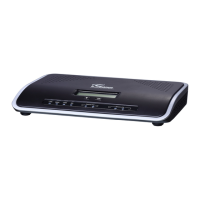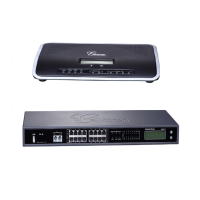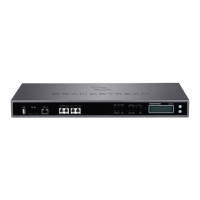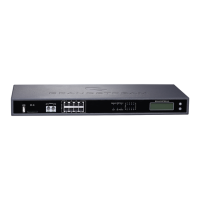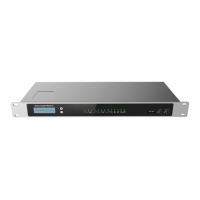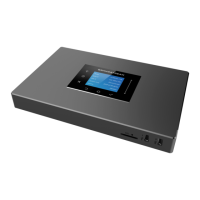UCM6100 Series User Manual
Version 1.0.18.13
▪ Example:
_X.
_NNXXNXXXXX /* 10-digit long distance */
_818X. /* Any number with leading 818 */
After creating the outbound route, users can choose to enable and disable it. If the
route is disabled, it will not take effect anymore. However, the route settings will
remain in UCM. Users can enable it again when it’s needed.
Configure the password for users to use this rule when making outbound calls.
Enable to configure the maximum duration for the call using this outbound route.
Configure the maximum duration of the call (in seconds). The default setting is 0,
which means no limit.
Configure the warning time for the call using this outbound route. If set to x
seconds, the warning tone will be played to the caller when x seconds are left to
end the call.
Configure the warning repeat interval for the call using this outbound route. If set
to X seconds, the warning tone will be played every x seconds after the first
warning.
Select privilege level for the outbound rule.
• Internal: The lowest level required. All users can use this rule.
• Local: Users with Local, National, or International level can use this rule.
• National: Users with National or International level can use this rule.
• International: The highest level required. Only users with international level
can use this rule.
• Disable: The default setting is "Disable". If selected, only the matched source
caller ID will be allowed to use this outbound route.
Please be aware of the potential security risks when using "Internal" level, which
means all users can use this outbound rule to dial out from the trunk.
Enable Filter on
Source Caller ID
When enabled, users could specify extensions allowed to use this outbound route.
"Privilege Level" is automatically disabled if using "Enable Filter on Source Caller
ID".
The following two methods can be used at the same time to define the
extensions as the source caller ID.
1. Select available extensions/extension groups from the list. This allows users
to specify arbitrary single extensions available in the PBX.
2. Custom Dynamic Route: define the pattern for the source caller ID. This
allows users to define extension range instead of selecting them one by one.

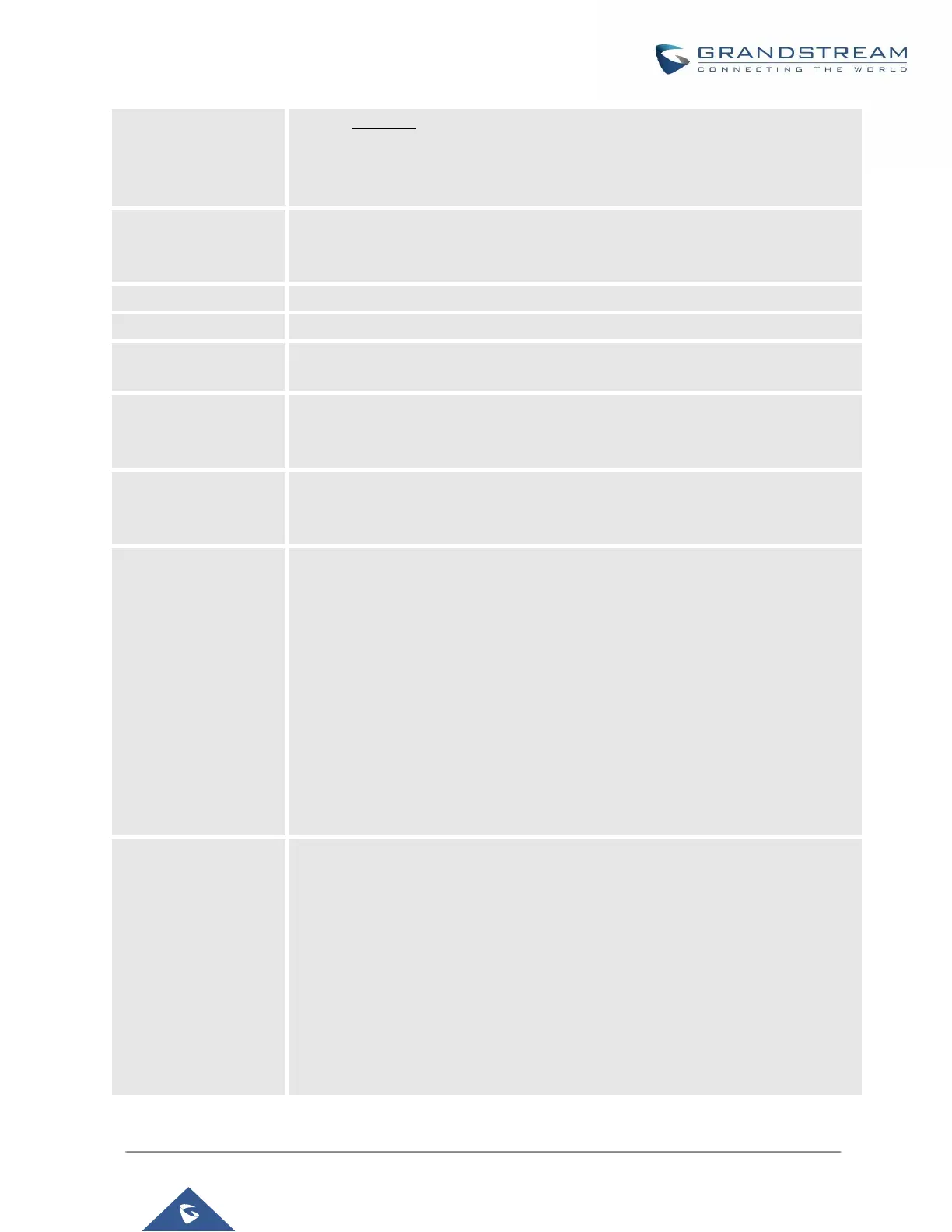